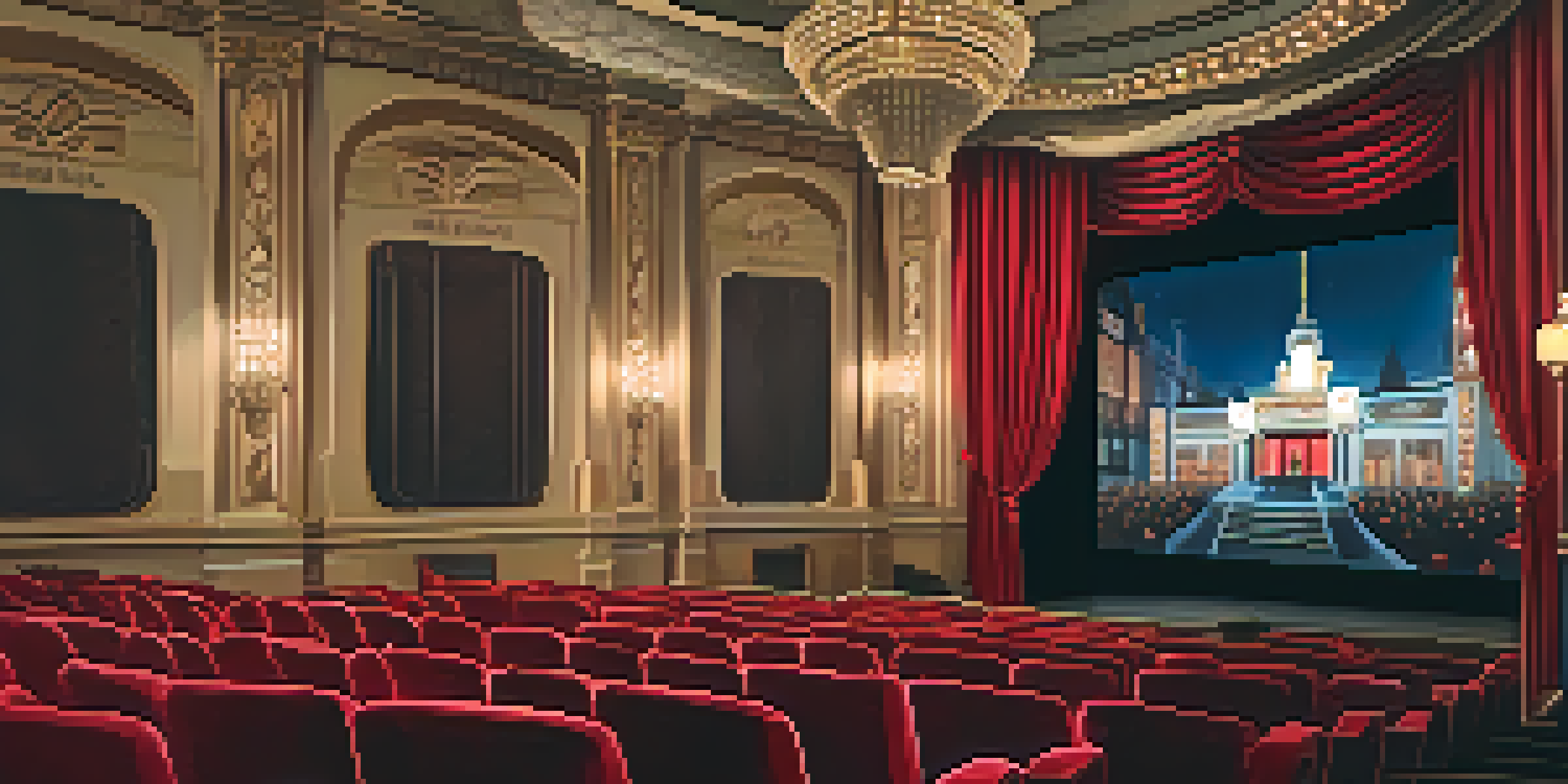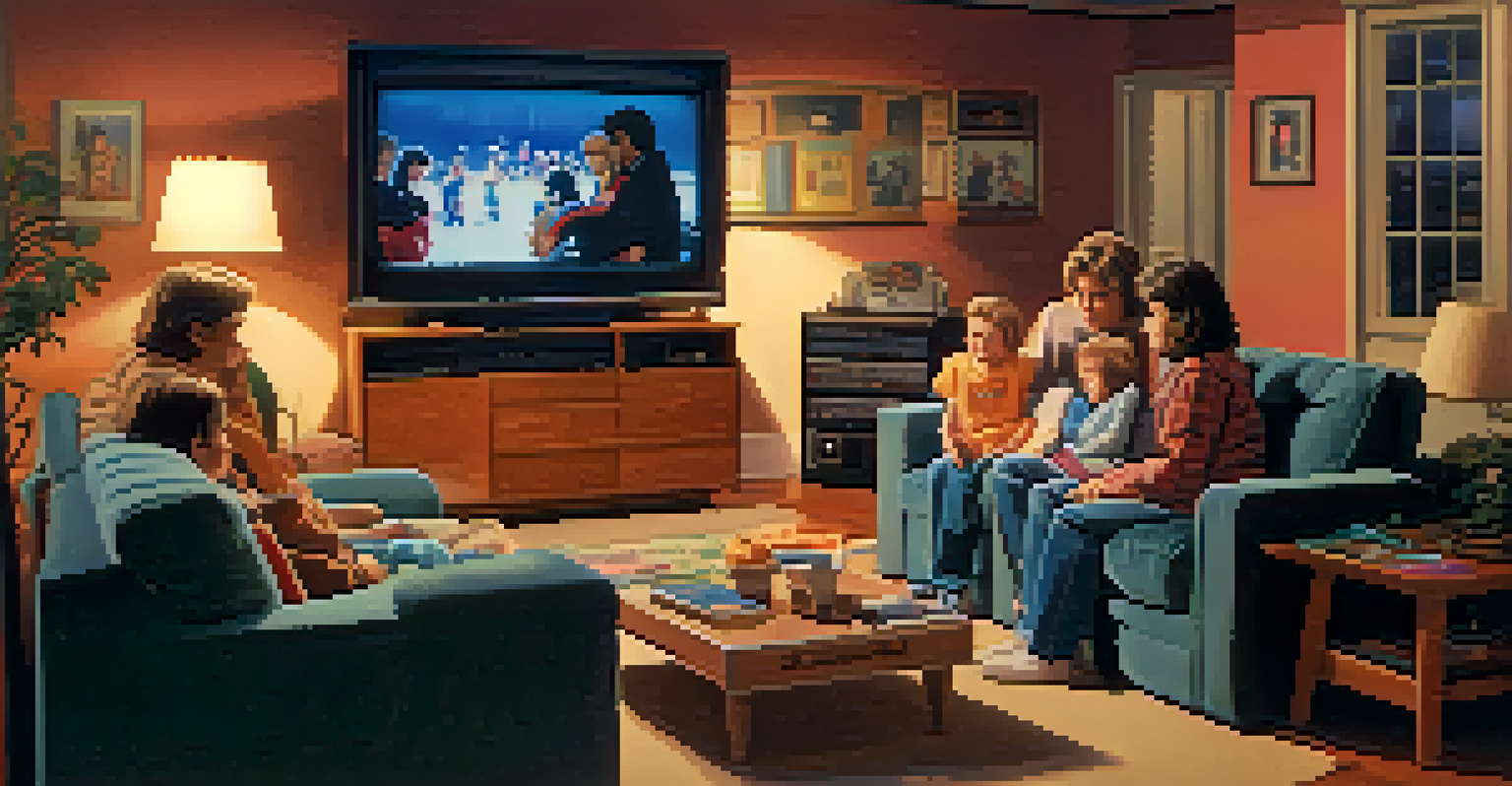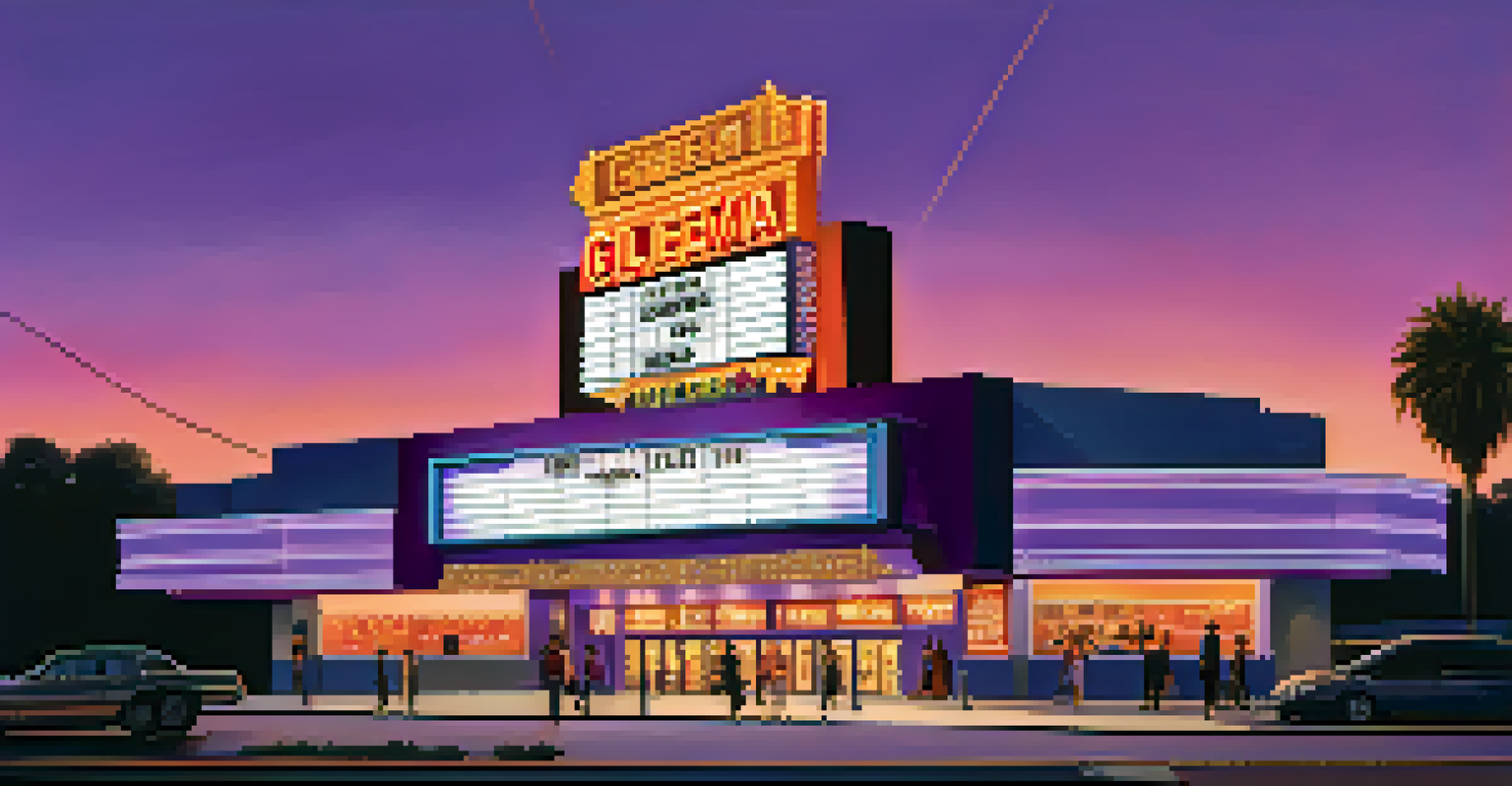The Birth of Cinemas: A Journey Through Movie Theaters' Origins

The Dawn of Motion Pictures: Early Beginnings
The journey of cinemas begins with the invention of the motion picture in the late 19th century. Pioneers like Thomas Edison and the Lumière brothers created devices that allowed people to view moving images, sparking public interest. These early films were simple and brief, often just capturing daily life or theatrical performances.
Cinema is a matter of what's in the frame and what's out.
As technology advanced, the magic of motion pictures drew larger crowds. The first public screening of a film took place in 1895 in Paris, which set the stage for a new form of entertainment. This marked the birth of a culture that would soon evolve into the grand spectacle we know today.
The excitement surrounding these early films laid the groundwork for what would become the cinema industry. People were captivated by the idea of watching stories unfold on a screen, leading to the establishment of the first dedicated movie theaters.
The Nickelodeon Era: Accessibility and Popularity
By the early 1900s, the concept of the 'nickelodeon' emerged, offering short films for just a nickel. These small theaters made movies accessible to the masses, transforming entertainment into a popular pastime. Families flocked to these venues, and the movie-going experience began to flourish.

Nickelodeons typically featured a mix of silent films and live performances, creating a vibrant atmosphere. This era also saw the rise of film stars, whose names began to attract audiences, further boosting attendance. The combination of affordability and entertainment paved the way for the widespread appeal of cinema.
Cinema's Evolution Over Time
From the early motion pictures to the rise of multiplexes, cinema has continually adapted to changing technologies and audience preferences.
As more nickelodeons opened across the country, the demand for longer and more complex films grew. This led to the development of the feature film, changing the landscape of storytelling in cinema.
The Golden Age of Hollywood: Glamour and Innovation
The 1920s ushered in the Golden Age of Hollywood, characterized by lavish productions and star-studded casts. This era saw the birth of the 'talkies,' films that synchronized sound with visuals, revolutionizing the industry. Audiences were mesmerized by this new technology, which added depth to storytelling.
The movies are the most powerful empathy machine in all the arts.
The grandeur of movie palaces emerged during this time, offering not just films but an entire experience. These theaters boasted elaborate designs, plush seating, and grand marquees, making a night out at the movies feel special. They became cultural landmarks in cities across America.
As the film industry thrived, so did the audience's appetite for diverse genres. From musicals to dramas, the range of stories available widened, helping to establish cinema as a significant art form and a major part of American culture.
The Rise of Multiplexes: The Changing Landscape
The 1970s marked a shift in the cinema experience with the introduction of multiplex theaters. These venues allowed for multiple films to be screened simultaneously, offering more choices to moviegoers. The convenience and variety drew even larger crowds, reshaping the way people watched movies.
Multiplexes also contributed to the decline of traditional single-screen theaters. With their ability to showcase the latest blockbusters alongside smaller indie films, multiplexes became the go-to destination for entertainment. This change mirrored broader trends in consumer preferences and lifestyles.
The Social Experience of Movies
Going to the cinema is not just about watching films; it fosters social connections and shared experiences among audiences.
As the age of multiplexes unfolded, filmmakers began to tailor their productions to meet the demands of this new audience. The focus shifted towards big-budget spectacles, leading to the rise of blockbuster culture, which still dominates the industry today.
The Impact of Technology: Home Viewing and Streaming
With the advent of home video technology in the 1980s, the way audiences consumed films began to change dramatically. VCRs allowed people to watch movies at home, offering convenience and comfort that theaters couldn't match. This shift challenged cinemas to rethink their approach to attracting audiences.
The rise of cable television and later streaming services further transformed the landscape. With platforms like Netflix and Hulu, viewers gained access to vast libraries of films from the comfort of their own homes. This convenience posed a significant challenge for traditional theaters.
Despite these changes, many cinemas adapted by enhancing the overall movie-going experience. Innovations like luxury seating, gourmet concessions, and immersive sound systems have sought to draw audiences back into theaters, proving that the communal experience of watching a film remains valuable.
The Cinema Experience: More Than Just Watching a Film
Going to the movies has always been about more than just the film itself; it’s a social experience. From first dates to family outings, cinemas have been a gathering place for people to share moments and create memories. The atmosphere of excitement and anticipation adds to the magic of watching a film.
Cinema offers a unique opportunity to escape reality and immerse oneself in different worlds. The shared laughter, gasps, and tears create a communal bond among strangers, reminding us of our shared humanity. This emotional connection is a key part of what makes the cinema experience special.
The Evolution of Movie Theaters
Cinema has transformed from simple motion pictures to elaborate multiplexes, adapting to changing audience preferences over the decades.
As we navigate the future of entertainment, the cinema continues to evolve while retaining its core essence. The joy of storytelling, the thrill of a shared experience, and the allure of the big screen ensure that movie theaters will remain a cherished part of our cultural landscape.
The Future of Cinemas: Adapting to a New Era
The future of cinemas lies in their ability to adapt to changing audience preferences and technological advancements. As streaming continues to grow, theaters are exploring new ways to engage viewers, such as hosting live events, screenings of classic films, and interactive experiences. This willingness to innovate is crucial in maintaining relevance.
Moreover, the rise of virtual reality (VR) and augmented reality (AR) presents exciting possibilities for the cinema experience. Imagine stepping into a film and interacting with its world—this could redefine storytelling and audience engagement. The fusion of technology with cinema could attract a new generation of moviegoers.

Ultimately, while the formats and experiences may change, the love for cinematic storytelling remains constant. As theaters embrace these changes, they can ensure that the magic of the movies endures for generations to come.